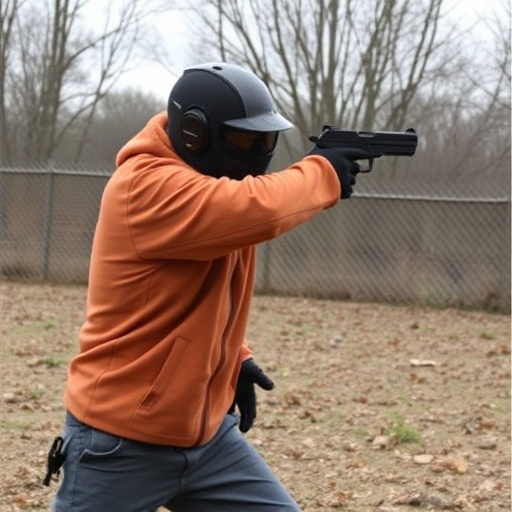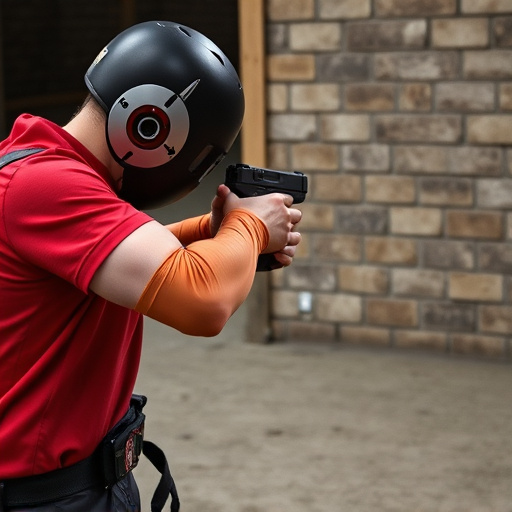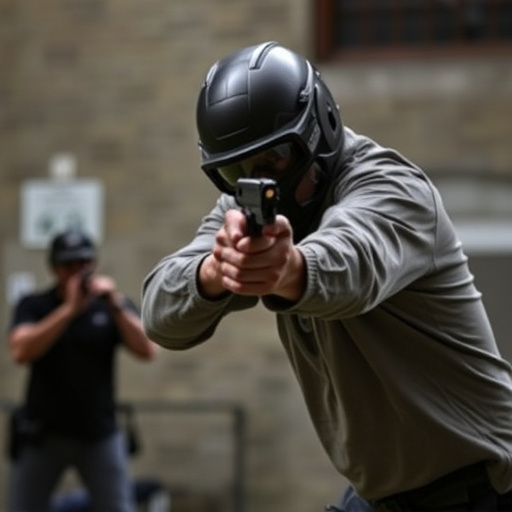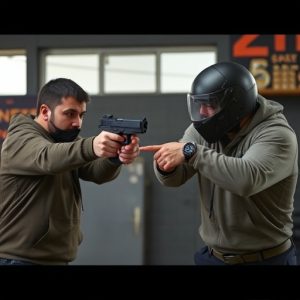Police-Grade Stun Guns: Amperage Power & Safety Insights
Police-grade stun guns are non-lethal force tools with high voltage, low amperage electric current t…….
Police-grade stun guns are non-lethal force tools with high voltage, low amperage electric current to temporarily incapacitate targets. Amperage strength (40,000 – 150,000 A) determines power, with premium models offering adjustable settings and durable construction for professionals. Basic options still offer effective personal defense. Safety is paramount with high-amperage devices; modern stun guns include strict safety features and guidelines, adhering to legal regulations that vary by jurisdiction. The market offers diverse police-grade stun gun options designed for balanced power, safety, and legality, catering to varied personal protection needs.
Electrical shock weapons, particularly police-grade stun guns, have emerged as powerful tools for self-defense. This comprehensive overview delves into the intricacies of these devices, focusing on their amperage and the factors that contribute to their effectiveness. From understanding the technology behind them to exploring safety considerations and legal aspects, this article provides valuable insights into various police grade stun gun options available in today’s market.
- Understanding Electrical Shock Weapons: A Comprehensive Overview
- Police-Grade Stun Guns: Features and Amperage Strength
- Safety Considerations and Legal Aspects of High-Amperage Stun Devices
Understanding Electrical Shock Weapons: A Comprehensive Overview

Electrical shock weapons, commonly known as stun guns, are non-lethal devices designed to temporarily incapacitate a target through an electric discharge. These tools have gained significant attention, particularly in law enforcement and personal defense circles, offering a safer alternative to firearms for those seeking to control and subdue individuals without causing permanent harm. With various police-grade stun gun options available, understanding the technology behind them is essential for both professionals and consumers.
These devices operate on the principle of delivering a high-voltage, low-amperage electric current to the body, disrupting muscle control and causing temporary paralysis. Amperage, measured in amps, refers to the rate at which electric charge flows through a circuit. Stun guns typically range from 10,000 to 40,000 volts, with amperages varying accordingly. Higher voltage ensures effective shock delivery, while lower amperage prevents severe or permanent injuries. Police-grade stun guns often feature advanced safety mechanisms and precise control over current output, ensuring their effectiveness in real-world scenarios without causing unnecessary harm.
Police-Grade Stun Guns: Features and Amperage Strength

Police-grade stun guns are designed for law enforcement and personal defense, offering a range of features to ensure effectiveness and safety. These devices typically deliver a powerful electrical shock to temporarily incapacitate a target, giving users precious time to escape or call for help. When considering a police-grade stun gun, one of the critical specifications to look at is amperage strength. Amperage refers to the electric current flowing through the device and is measured in amps (A). Higher amperage generally means more power, resulting in a stronger stun effect.
The amperage strength of stun guns can vary widely among different models and brands, usually ranging from 40,000 to 150,000 amps. Higher-end options often boast amperages exceeding 100,000 A, ensuring a robust shock that can subdue an aggressor quickly. Features like adjustable settings, powerful magnets for better retention, and durable construction are common in premium stun guns. These advanced models cater to professionals who require reliable protection in high-risk situations, while more basic options still offer effective defense for personal use, with varying levels of amperage strength tailored to different user needs and preferences.
Safety Considerations and Legal Aspects of High-Amperage Stun Devices

When considering high-amperage stun devices, safety should be the top priority. These devices deliver a powerful electric shock, capable of incapacitating an attacker temporarily, but they also pose potential risks to users and bystanders if not handled correctly. It’s crucial to understand the amperage ratings and ensure proper training in their use to minimize these risks. Many modern stun guns offer Police Grade options, featuring higher amperages for enhanced effectiveness against larger targets or aggressive assailants. However, these devices often come with stringent safety features and guidelines designed to prevent misuse and accidental injuries.
The legal aspects of owning and carrying high-amperage stun devices vary significantly across jurisdictions. In many places, police-grade stun guns are regulated as less-lethal weapons, subject to specific laws and restrictions. It’s essential for users to familiarize themselves with local regulations to ensure compliance and avoid legal repercussions. The market offers diverse Police Grade Stun Gun Options, each designed to balance power, safety, and legality, catering to various personal protection needs while adhering to the law.
In conclusion, understanding the amperage details of police-grade stun guns is crucial for both law enforcement professionals and individuals seeking effective personal defense options. These high-amperage devices offer powerful stun capabilities, making them reliable tools in various situations. However, it’s essential to consider safety measures and adhere to legal guidelines when using or carrying such devices. Exploring the available Police Grade Stun Gun Options allows users to make informed decisions, ensuring both effectiveness and responsibility.


